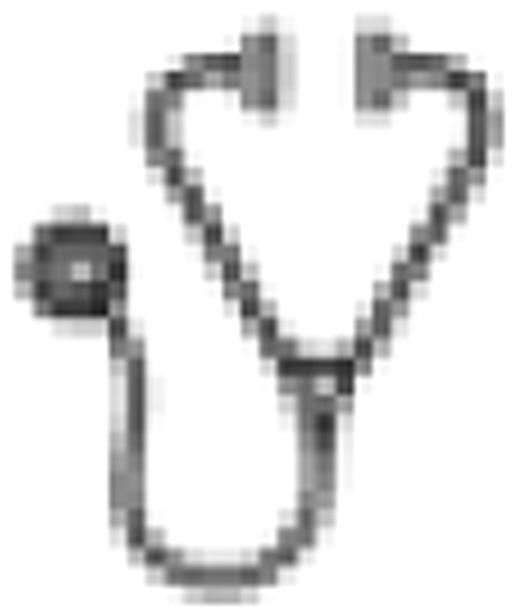Abstract
Abstract 3654
Menorrhagia in adolescents could be the first sign of a bleeding disorder. Prior research has found occult bleeding disorders, e.g. von Willebrand disease, in women with menorrhagia. We hypothesized that most adolescents girls with menorrhagia do not seek medical attention; thus we performed a survey of adolescents girls in their schools.
Between February and April, 2008 we presented the study to 705 adolescents girls in six schools. The presentation included a short lecture and completion of a questionnaire. Due to ethical regulations the questionnaire could include only general information without any identifying data. The adolescents were asked if the thought they had heavy periods. The answers options were “yes”, “no”, “sometimes”, and “do not know”. After providing parental and individual consent, 94 adolescents girls completed a detailed personal and family (Hospital for Sick Children) HSC bleeding questionnaire and a pictorial bleed assessment chart (PBAC) during the next menstrual cycle. A blood sample was taken from 62 adolescents (66%) for complete blood count, partial thromboplastin time, prothrombin time, factor VIII, von Willebrand factor (VWF) activity and antigen. The distribution of age, years since menarche and response to the initial question regarding heavy periods was similar among the entire approached population, those who consented and those who had laboratory evaluation (Table 1).
One hundred and five adolescents girls (15%) reported they had heavy periods on the initial questionnaire. An additional 21% reported to have heavy periods sometimes. Frequency of perceived menorrhagia was not associated with age or years since menarche. Among the 94 girls who completed the full questionnaires, menorrhagia based on a PBAC ≥ 100 and/or a positive answer on the HSC questionnaire was found in 34 adolescents (36%, 95% CI 26.5%-46.7%). Almost a third of those adolescents (11/34) did not perceive they had menorrhagia according to their response on the initial questionnaire. Prevalence of menorrhagia was not associated with age, years since menarche, family history of bleeding symptoms or evidence of other bleeding symptoms. Hemoglobin levels were significantly lower in those with vs. those without menorrhagia, mean±SD, 12.6±1 vs. 13.2±0.8 (p=0.025). Of the six adolescents with hemoglobin <12 g/dL, only two were aware they had anemia. Menorrhagia was not significantly associated with coagulation abnormalities. One girl with menorrhagia was found to have borderline VWF levels.
Menorrhagia is under-diagnosed in adolescents. By using standardized questionnaires, we were able to identify a group of girls with menorrhagia associated with higher risk of anemia. Importantly, some of these girls were not aware they had a problem. The lack of association between menorrhagia and coagulation abnormalities could be related to the small sample size or to the non-selective nature of the study participants (inclusion of girls with menorrhagia who did not seek medical attention). Yet, we believe that questioning adolescents for menorrhagia is important as it could contribute to their improved well-being. The low participation rate further highlights the difficulty in doing research in this area.
Characteristic of the different study cohorts.
| . | Entire cohort . | Completed questionnaires . | Completed questionnaires and blood tests . |
|---|---|---|---|
| N | 705 | 94 | 66 |
| Age (y), mean±SD | 16.7 ± 0.9 | 16.8 ± 0.9 | 16.6 ± 0.9 |
| Age at menarche (y), mean ± SD | 12.8 ± 1.1 | 12.6 ± 1.2 | 12.6 ± 1.1 |
| Years since menarche, mean ± SD | 3.8 ± 1.4 | 4.3 ± 1.9 | 4.1 ± 1.8 |
| “Do you think you have heavy periods?” | |||
| Yes | 15.1% | 13.8% | 16.1% |
| No | 52.4% | 45.7% | 41.9% |
| Sometimes | 20.7% | 26.6% | 24.2% |
| Do not know | 11.9% | 13.8% | 17.7% |
| . | Entire cohort . | Completed questionnaires . | Completed questionnaires and blood tests . |
|---|---|---|---|
| N | 705 | 94 | 66 |
| Age (y), mean±SD | 16.7 ± 0.9 | 16.8 ± 0.9 | 16.6 ± 0.9 |
| Age at menarche (y), mean ± SD | 12.8 ± 1.1 | 12.6 ± 1.2 | 12.6 ± 1.1 |
| Years since menarche, mean ± SD | 3.8 ± 1.4 | 4.3 ± 1.9 | 4.1 ± 1.8 |
| “Do you think you have heavy periods?” | |||
| Yes | 15.1% | 13.8% | 16.1% |
| No | 52.4% | 45.7% | 41.9% |
| Sometimes | 20.7% | 26.6% | 24.2% |
| Do not know | 11.9% | 13.8% | 17.7% |
No relevant conflicts of interest to declare.

This icon denotes an abstract that is clinically relevant.
Author notes
Asterisk with author names denotes non-ASH members.

This feature is available to Subscribers Only
Sign In or Create an Account Close Modal